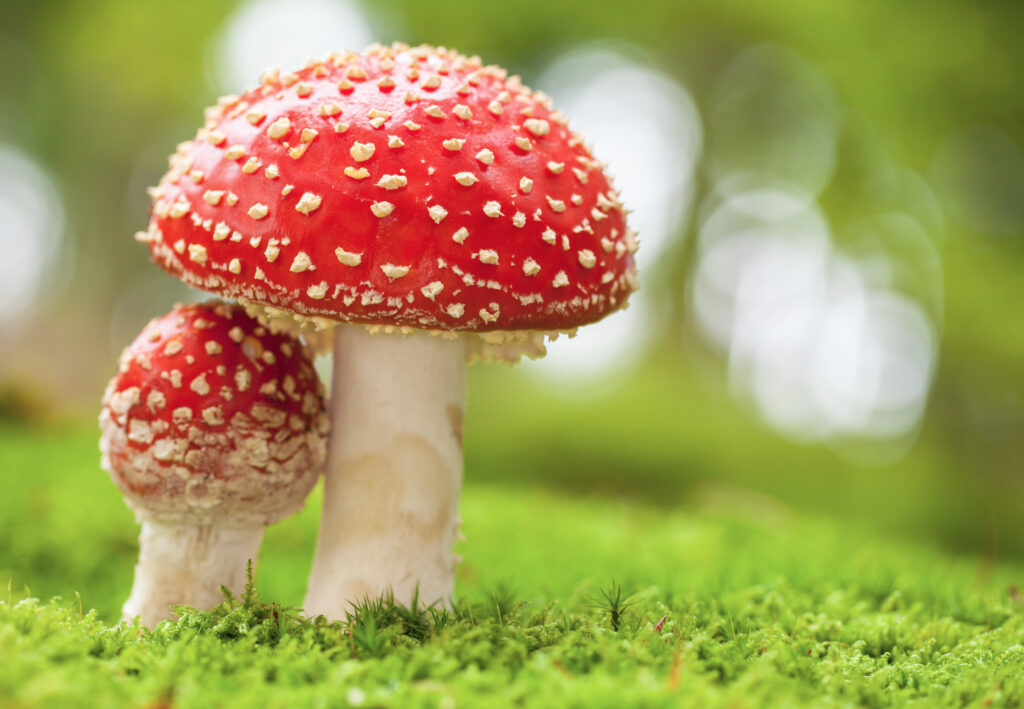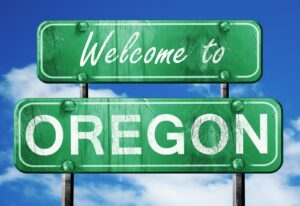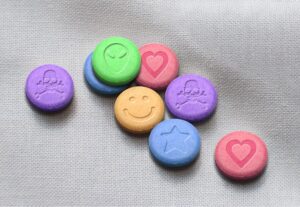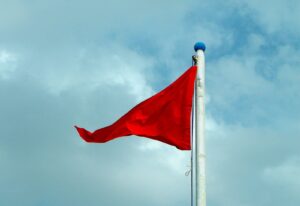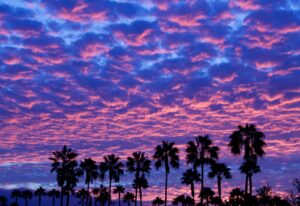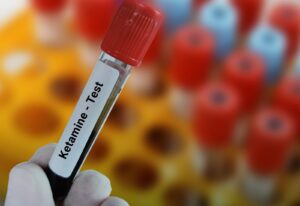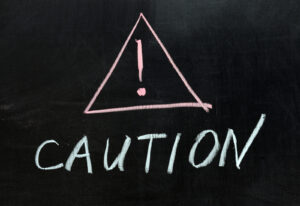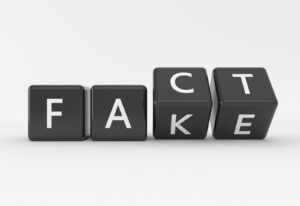Amanita muscaria (also known as fly agaric) is a type of mushroom with hallucinogenic properties. It is also not listed on any schedule of the Controlled Substances Act (CSA). So of course, people want to make and sell it. But what is it? And is it legal?
Amanita muscaria (fly agaric)
Amanita muscaria is a red-capped mushroom with white dots. While it has psychedelic properties, it is also highly toxic! Specifically:
Amanita muscaria is a highly poisonous mushroom due to the fact that it contains psychoactive alkaloids: muscarine, ibotenic acid and muscimol. The latter two substances are structurally similar to gamma-aminobutyric acid (GABA) and they act as neurotransmitters in the CNS, stimulating glutamate receptors. After mushroom ingestion, ibotenic acid and muscimol are rapidly absorbed by the gastrointestinal tract and cross the blood-brain barrier via an active transport system. Ibotenic acid is rapidly and spontaneously decarboxylated to muscimol, which appears to be the agent responsible for the majority of symptoms, although muscimol may be actively converted to ibotenic acid via glutamate decarboxylase. The alternation between muscimol and ibotenic acid is responsible for the fluctuation in CNS symptoms.
And:
Symptoms start 30 minutes to 2 hours after ingestion and the primary effects usually involve CNS manifestations, often alternating between stimulation/excitation and depression. They begin as a state of confusion, dizziness, agitation, ataxia, visual and auditory perceptual changes, space distortion and a lack of awareness of time. Nausea, vomiting and diarrhoea are uncommon. Tachycardia, bradycardia and hypertension may also occur. Both hypo- and hyperthermia have been reported. Respiratory depression and bronchorrhoea are rare. Mydriasis, miosis and metabolic acidosis are also possible. In severe poisoning, symptoms may manifest with coma and in rare cases lead to death. A famous case is that of Count Achilles de Vecchi, an Italian diplomat residing in Washington, who died in 1897 after ingesting a large amount of mushrooms.
The average duration of clinical manifestation is 8–24 hours; only 1 case described a 5-day paranoid psychosis. In our report, the state of coma lasted 72 hours, and to our knowledge, it represents the first described case of prolonged coma. We believe that it was due to the quantity of ingested mushrooms (13 mushroom caps) and that the rapid treatment applied was decisive for the good prognosis.
So all in all, the experience is long-lasting, possibly intense, and also could be extremely dangerous. One would think that the DEA would have its hands all over amanita muscaria. But, the substance is not on the CSA. Nor does it even appear to be a Drug of Concern, like salvia.
Is amanita muscaria legal?
That does not mean that all is good to go. States are free to criminalize drugs that DEA doesn’t. Louisiana law expressly bars amanita muscaria (as far as I know it’s the only state with an express ban). When the market grows, other states will jump on the bandwagon given potential toxicity concerns.
Even if states or the DEA don’t go for a ban, companies will still need to deal with the FDA and state equivalents. The FDA has broad authority to go after unapproved new drugs. If you’ve read our blogs on CBD and the FDA, (see here for one of many examples), you should know that any sort of health claim (even things like “promotes sleep”) can render a product an unapproved new drug. Products that the FDA deems to be “adulterated” (and they have tons of latitude to make that call) will also be subject to penalties.
Amanita muscaria is both psychoactive and potentially toxic – so it’s safe to assume the FDA’s going to eventually get wind of the market like they have with CBD. And with kratom. And with delta-8. Even in the of chance that FDA doesn’t decide to do anything, state equivalent agencies almost certainly will.
Liability and wrongful death concerns
Putting all of that aside, there’s the practical element. Amanita muscaria is apparently toxic. Even with every warning under the sun, and even if crafty scientists develop ways to reduce risks, if people face adverse side effects, there will be product liability or even wrongful death lawsuits. It also may test the limits of what kinds of insurance coverage is available for manufacturers and sellers. And keep in mind that in product liability cases, everyone in the supply chain is on the hook.
So to answer the question of whether amanita muscaria is legal – it’s complicated. Stay tuned to the Psychedelics Law Blog for more updates.










